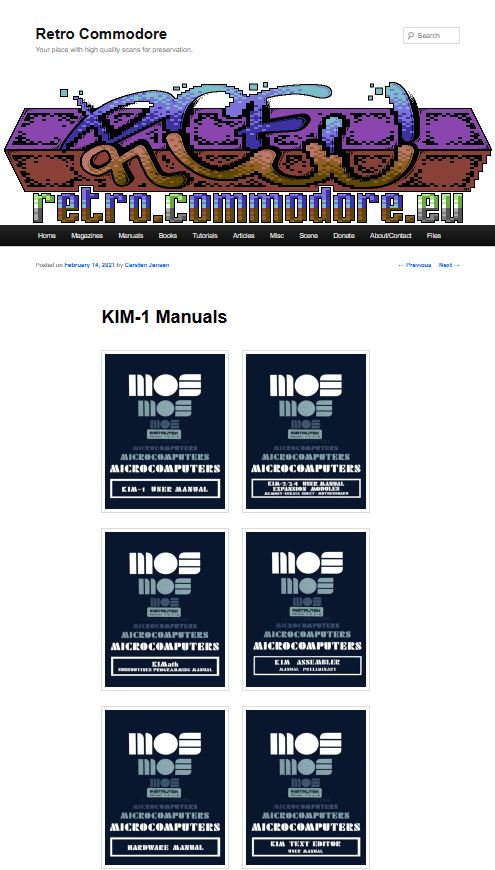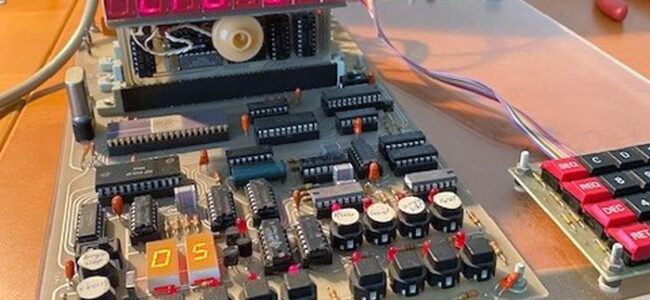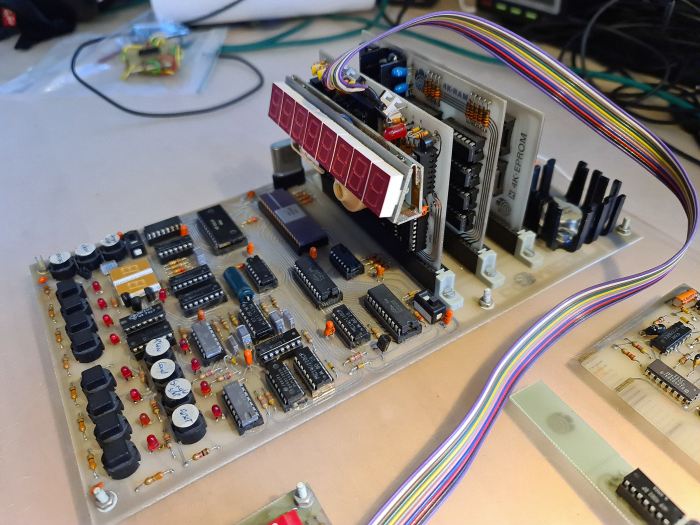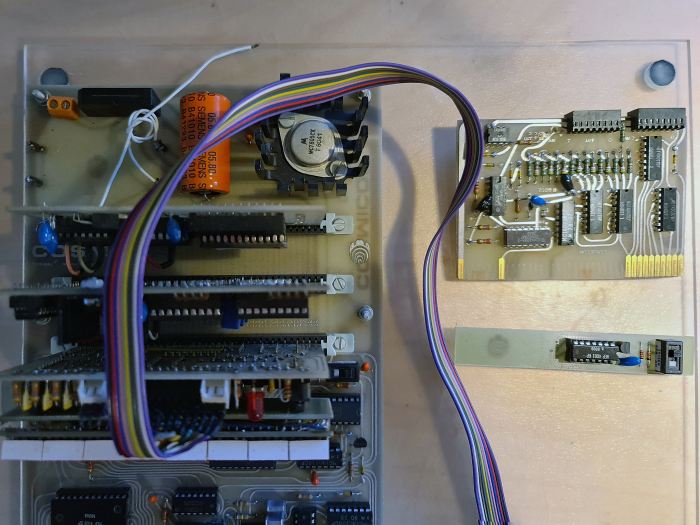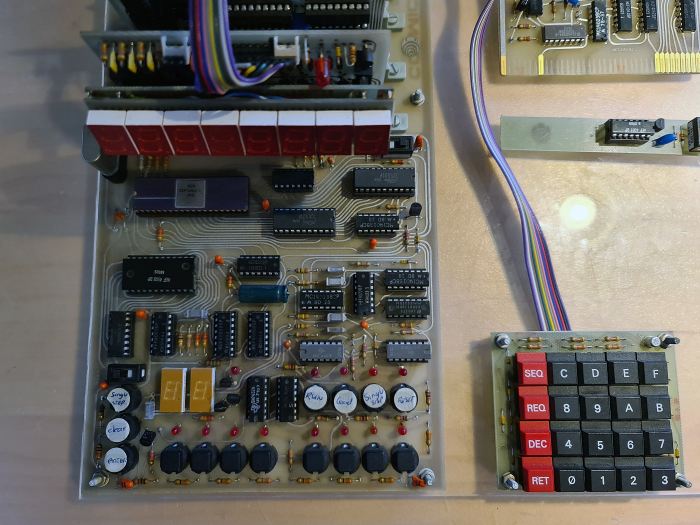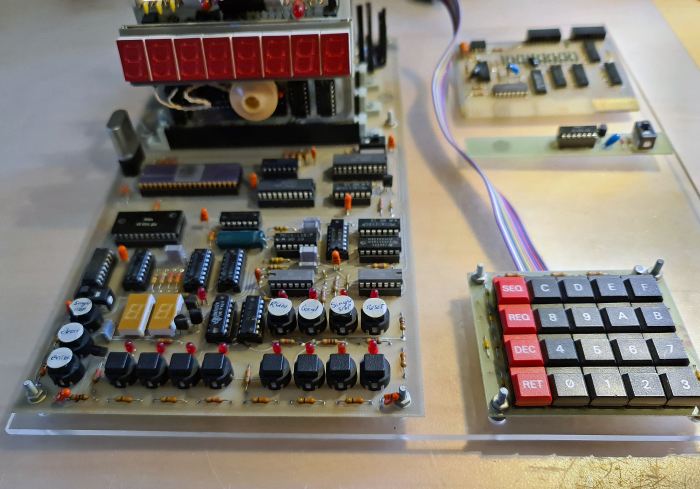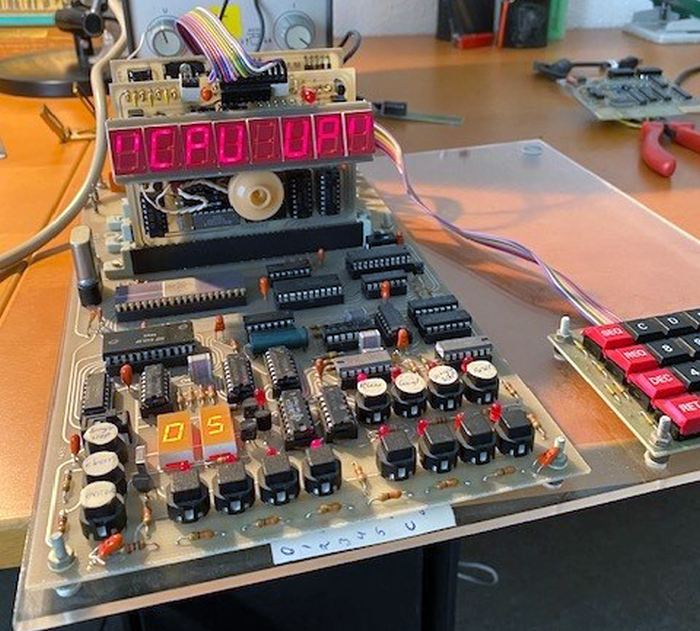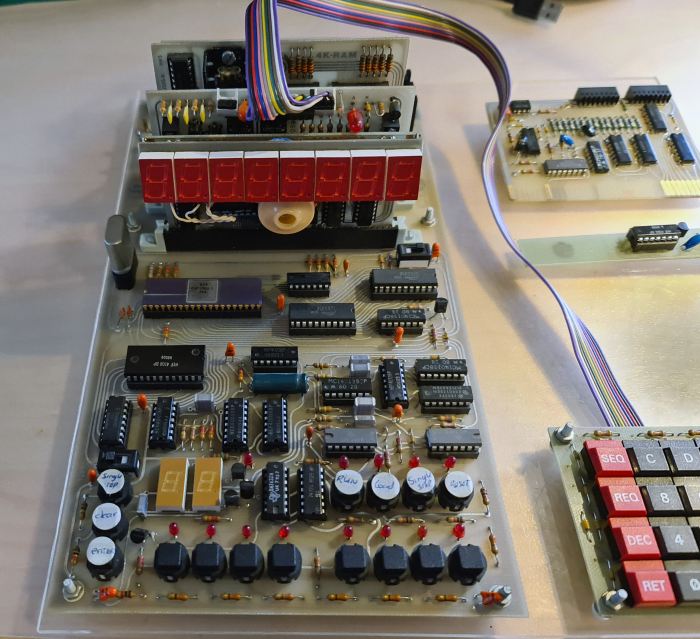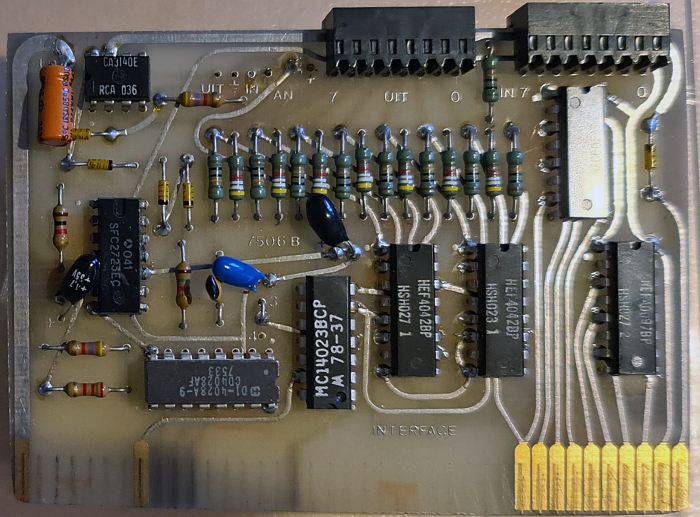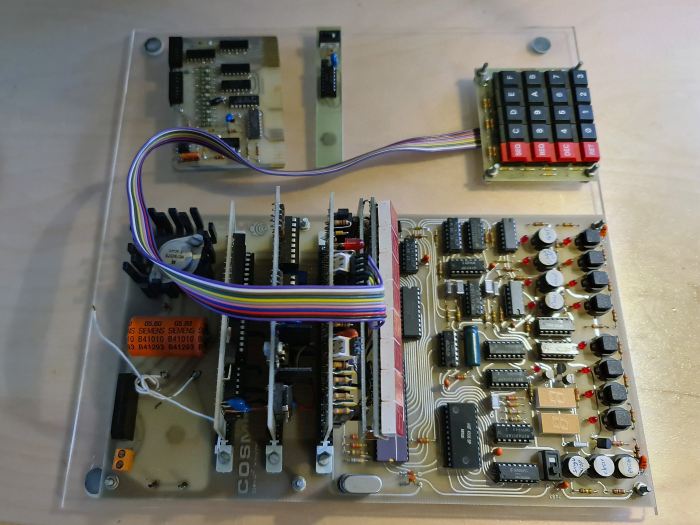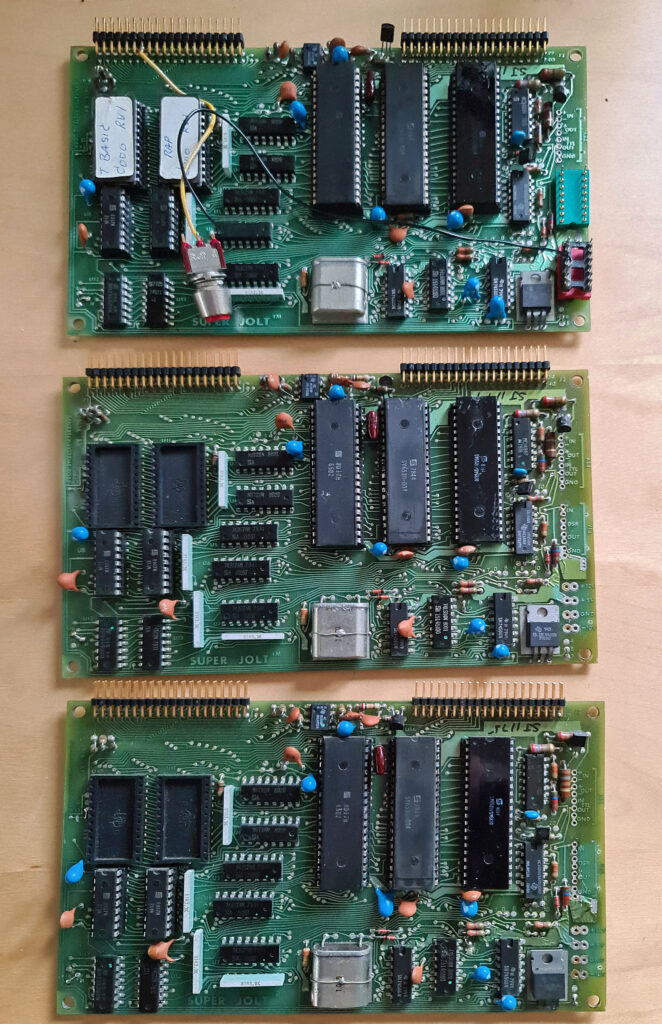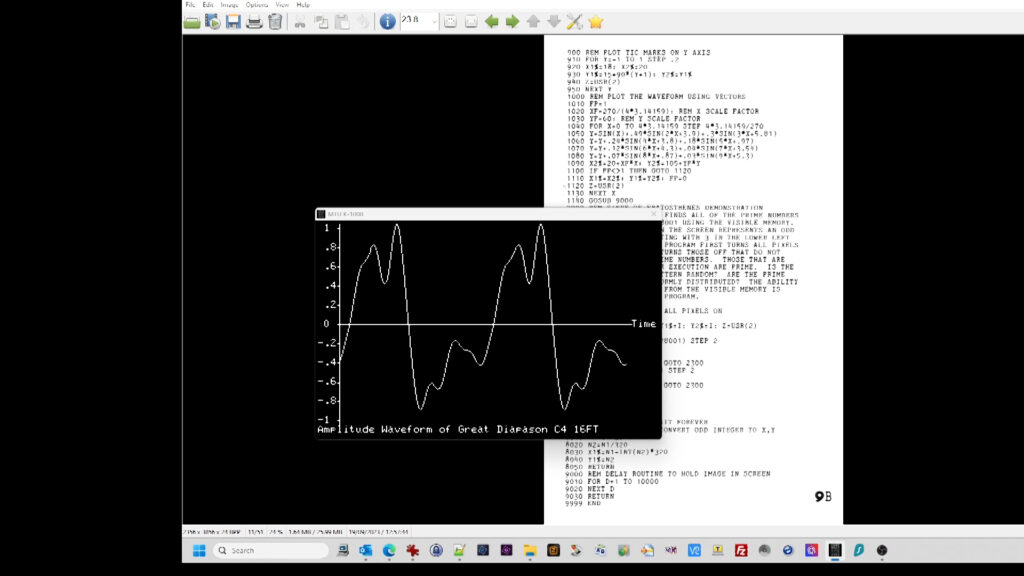All about the MTU K-1008 Visible Memory: documents, programs, images, videos and replica, you find it here.
The MTU K-1008 is an 8K memory and video display board. Part of the MTU family of card cages and RAM/ROM boards, around 1978 for KIM-1, SYM-1, AIM 65. Later also for Commodore PET systems.
I have some K-1008 information on paper as Fall Catalog and K-1008 User manuals of MTU, the listings in the Graphics software Package and hires photos of the board.
Triggered by Dave Plummer, who owns a K-1008 and made some demo programs I added this spring the K-1008 as peripheral to the KIM-1 Simulator.
A basic working version, with memory settings as the original. A 6502 program in the simulator could fill the video display.
Dave made nice youtube videos about his KIM-1 system with MTU cards in a card cage, see Dave’s Garage.
Then Eduardo Casino, of KIM-1 Replica fame, started to design a replica, including an expansion bus. He motivated me to enhance the Simulator.
Eduardo also OCR’ed and typed in the Graphics Software Package programs for the MTU K-1008. I played with the sources and coupled the text display programs to Microsoft KB9 Basic.
He made a quick and dirty binary image to show on the K-1008 video display. I took his idea and added a facility to the Simulator to load any image to the K-1008.
This requires the use of GIMP, the image handling program, to create intermediate black and white 320×200 files as ‘C header files’.
These C header file can be imported in the Simulator and shown on the display. A command line utility LoadK1008 converts these C header files to a binary image in K-1008 format.
All this required a page with all the K-1008 information: documents, programs, images, videos and replica, you find it here.
Update 10 september: Eduardo Casino has made available his work on the Graphics Software Package: OCR’ed manual, listings, sources, binaries made with 64tass assembler.
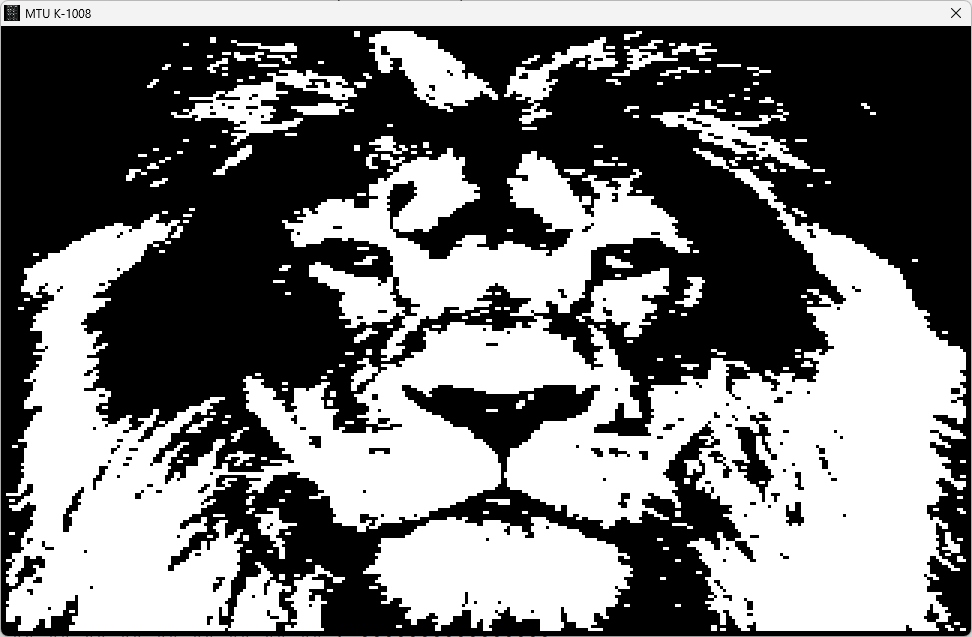
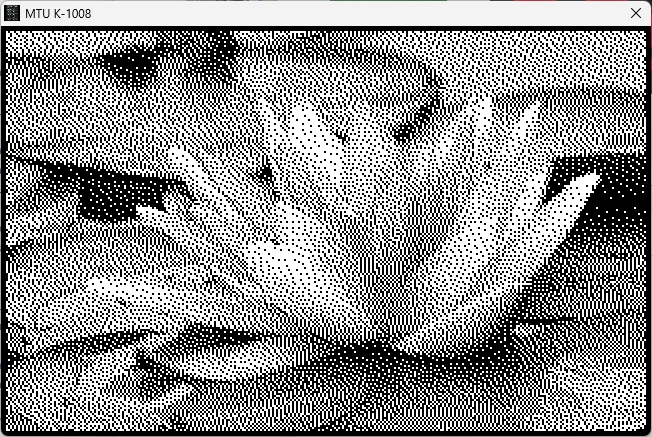
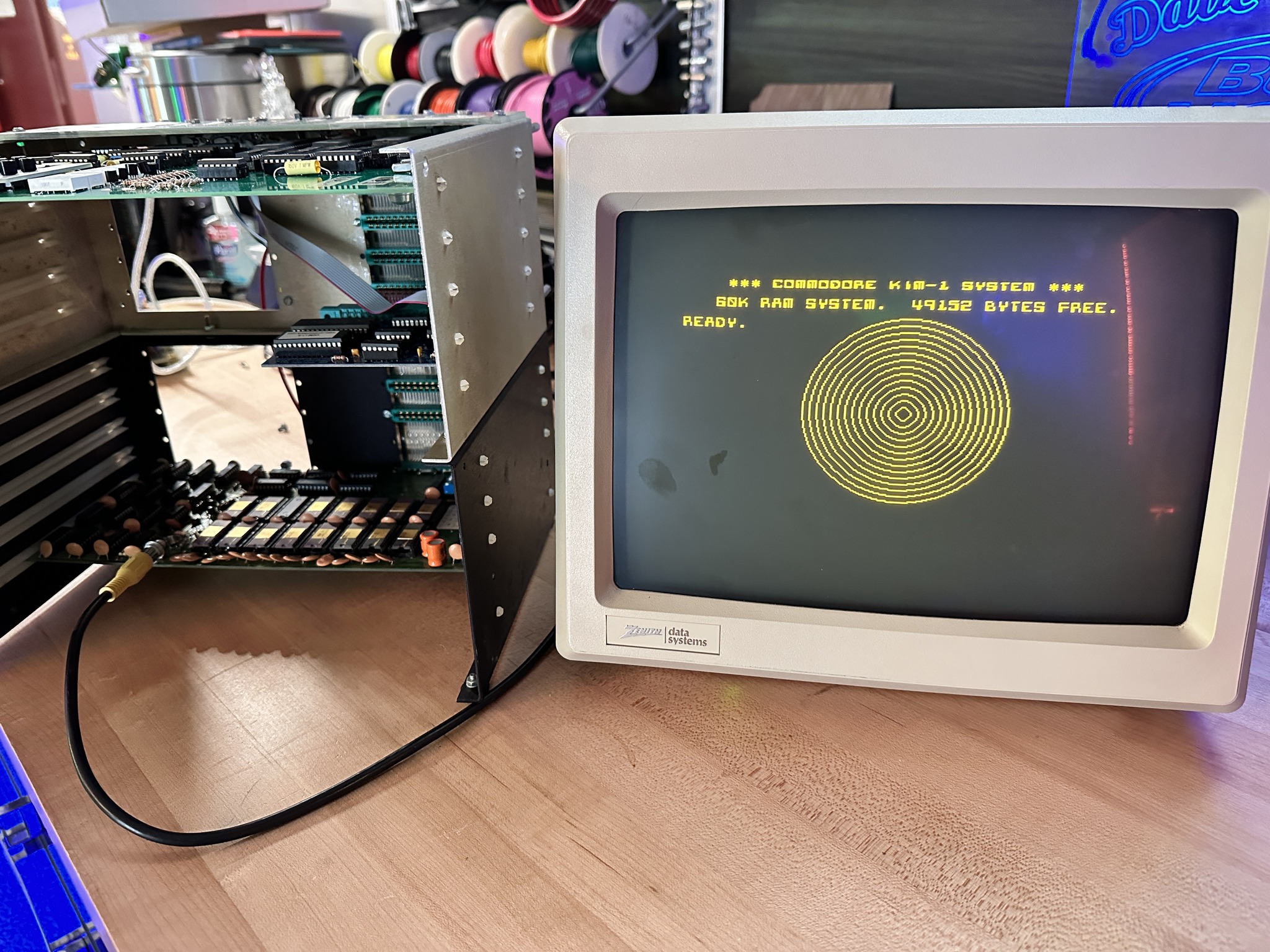

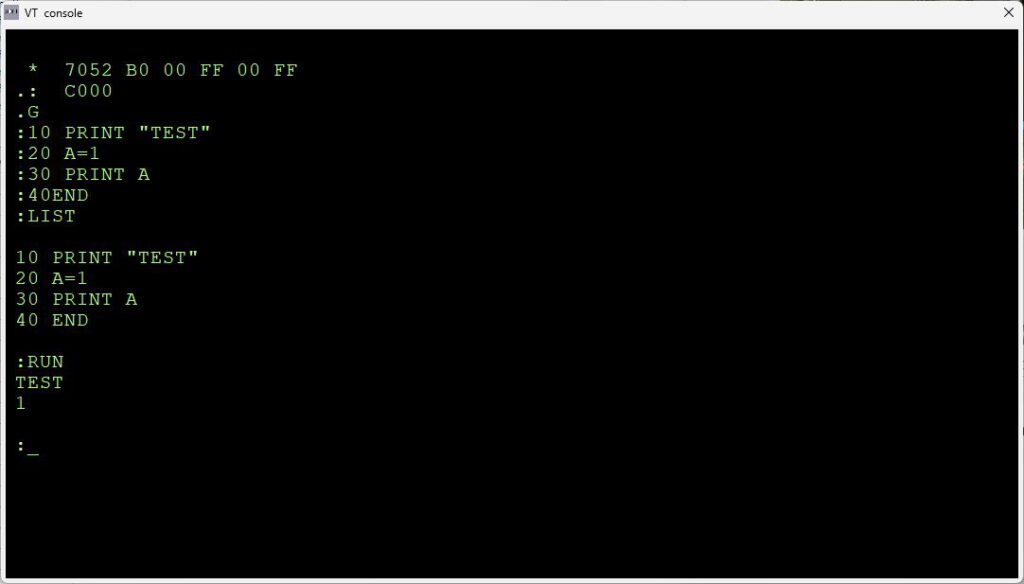
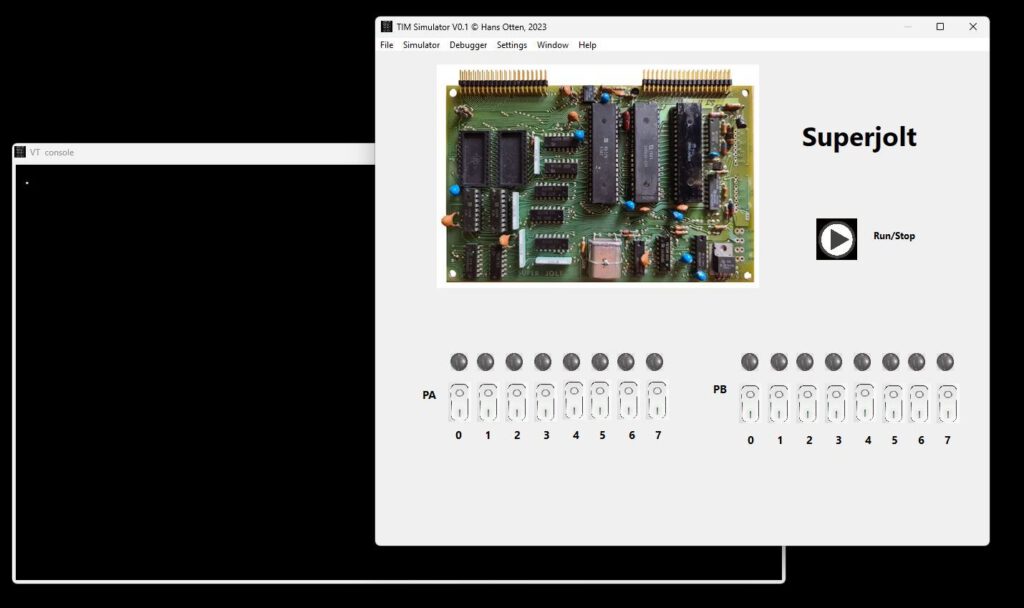
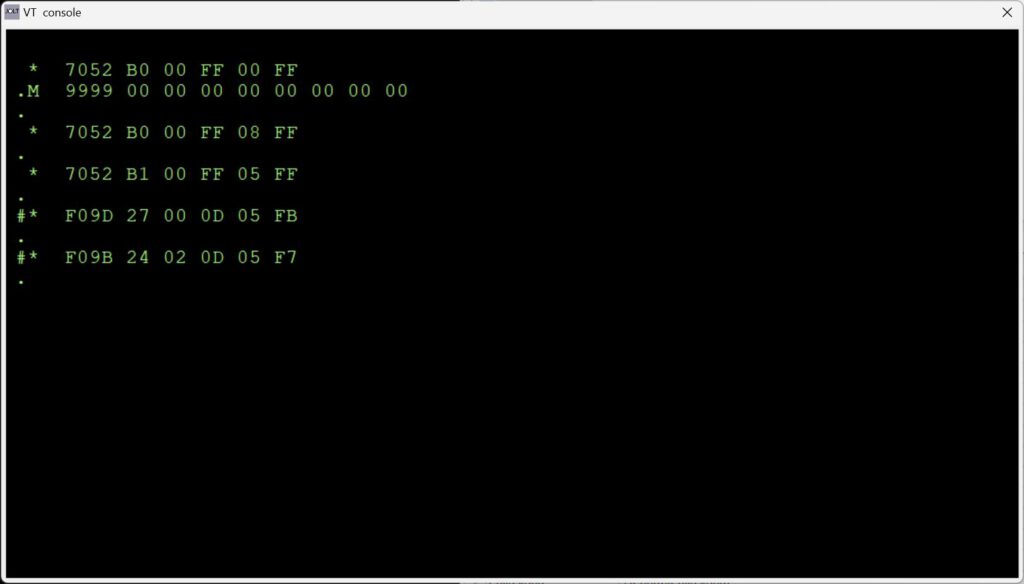 TIM Superjolt Simulator V0.4, Tiny Basic working!
TIM Superjolt Simulator V0.4, Tiny Basic working! .
.